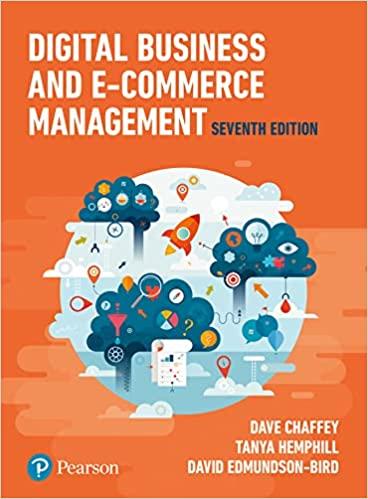Question
Would you please comment on this discussion and add your thoughts? Figure 11-2 in the textbook illustrates the difference between the basic preferences of risk-averse,
Would you please comment on this discussion and add your thoughts?
Figure 11-2 in the textbook illustrates the difference between the basic preferences of risk-averse, risk-neutral, and risk-seeking types: the y-axis represents utility or the amount of pleasure gained by taking a risk, and the x-axis represents the amount of potential payoff or dollar value of the opportunity at risk.
If more payoff or money is at stake for the risk-averse person, then the risk-averse person or organization gets less satisfaction from risk or has a lower tolerance for risk. For example, a risk-averse organization might not purchase hardware from a vendor that has not been in business for a while.
Risk-seeking people or organizations have a higher tolerance for risk and are more satisfied when more payoffs are at stake. Risk-seeking persons or organizations prefer more uncertain outcomes and are often willing to pay a penalty for taking a risk. For example, a risk-seeking organization might intentionally choose an emerging vendor as a hardware purchaser and gain an advantage by acquiring a new product with unusual features.
Risk-neutral people balance risk and payoffs. A risk-neutral organization might conduct a series of analyses to assess the likelihood of a purchase decision. This type of organization uses many factors to evaluate a decision, risk being only one of them.
The pharmaceutical industry often evaluates all aspects of risk based on ICH. Risks are identified, multiplied by severity, detectability, and probability of occurrence, respectively, to produce a numerical value, and depending on the magnitude of the value, risk reduction measures are taken. This is why we consider our business to be risk-neutral.
I think an investment is easy to understand. Although I do not actively invest, I believe that my defined contribution pension plan is managed in a risk-neutral manner.
Reference:
Schwalbe, K., Information Technology Project Management. 8th ed (2017). Cengage Learning, Boston, MA.
Step by Step Solution
There are 3 Steps involved in it
Step: 1

Get Instant Access to Expert-Tailored Solutions
See step-by-step solutions with expert insights and AI powered tools for academic success
Step: 2

Step: 3

Ace Your Homework with AI
Get the answers you need in no time with our AI-driven, step-by-step assistance
Get Started


